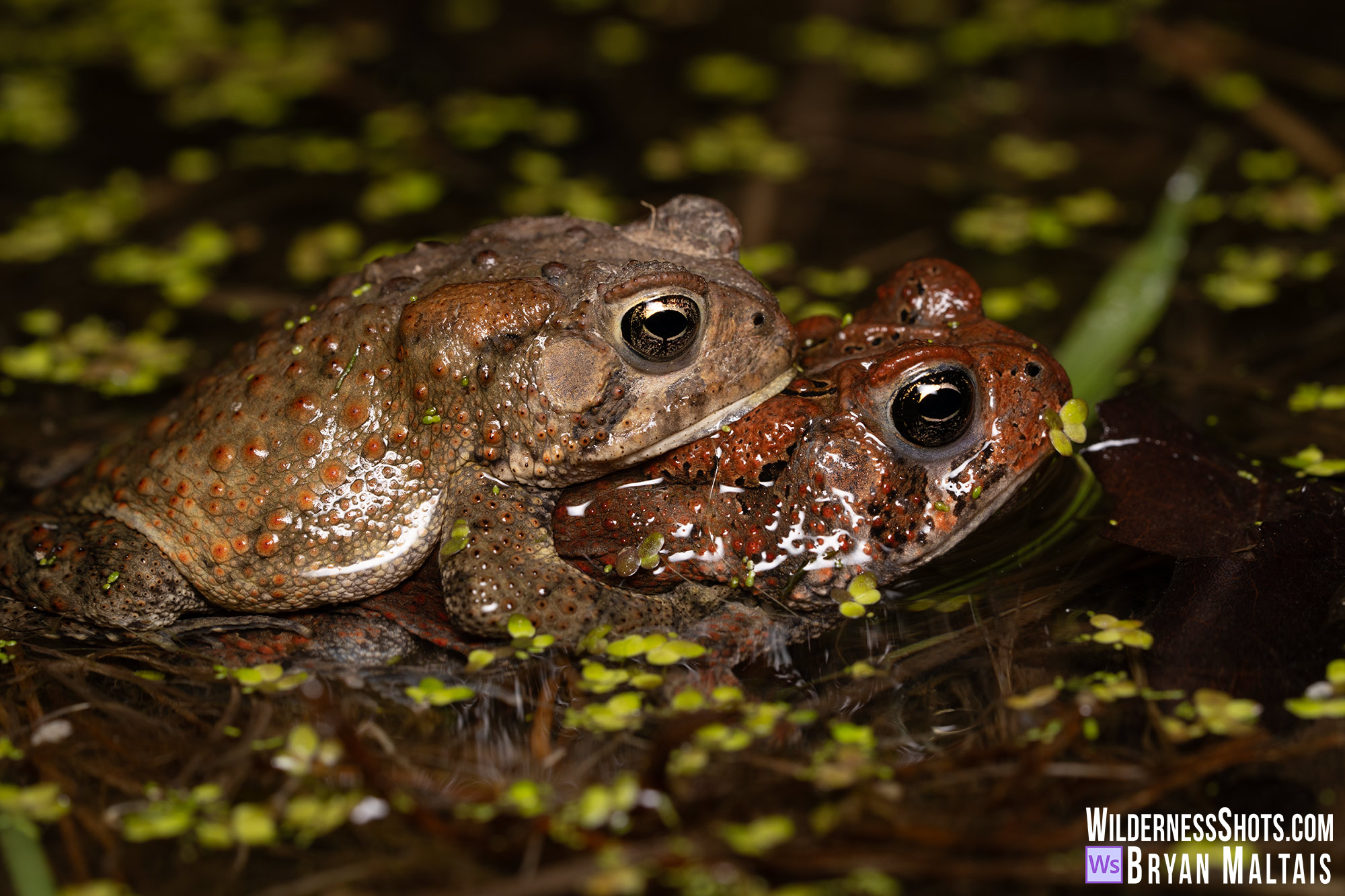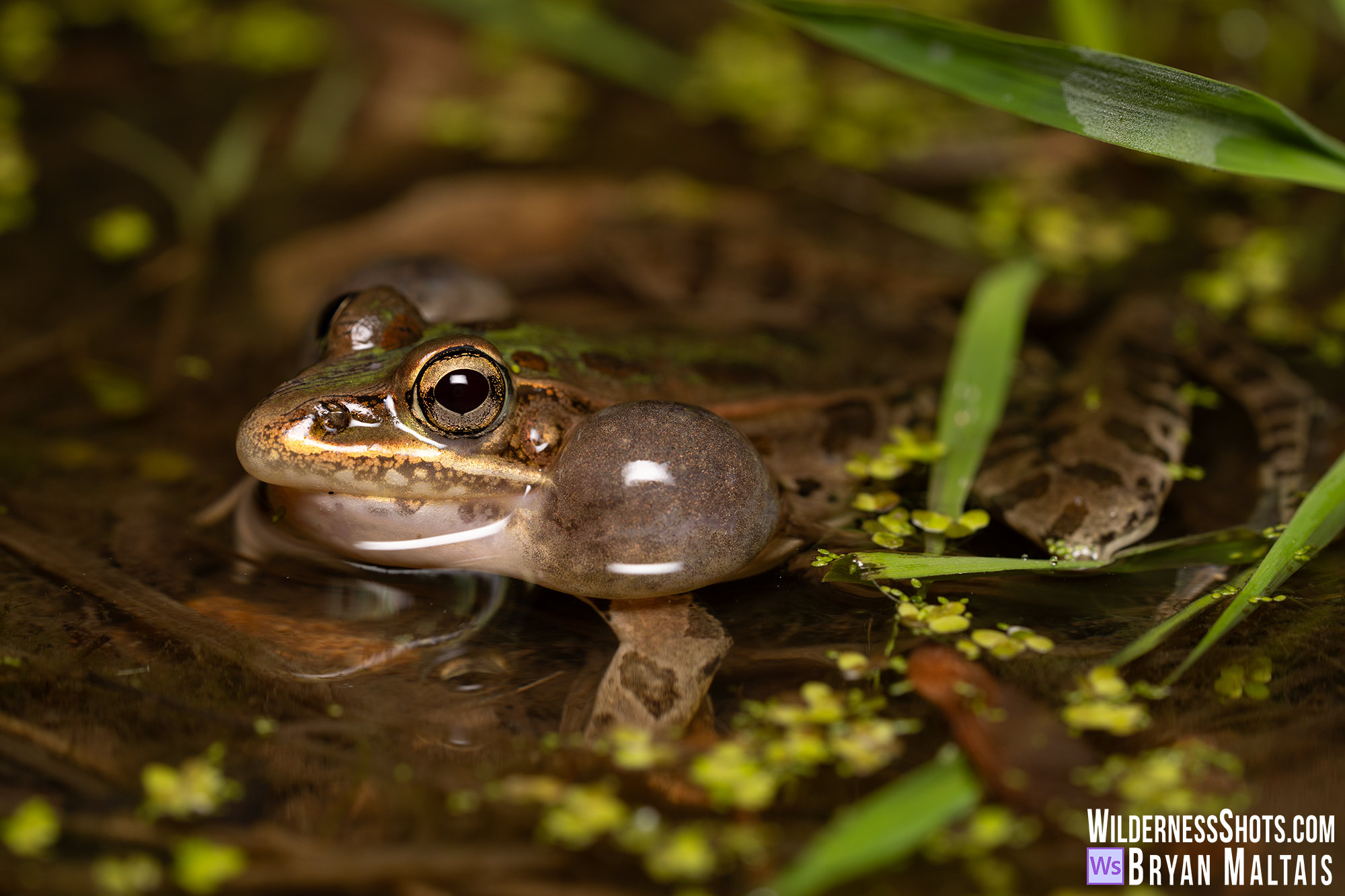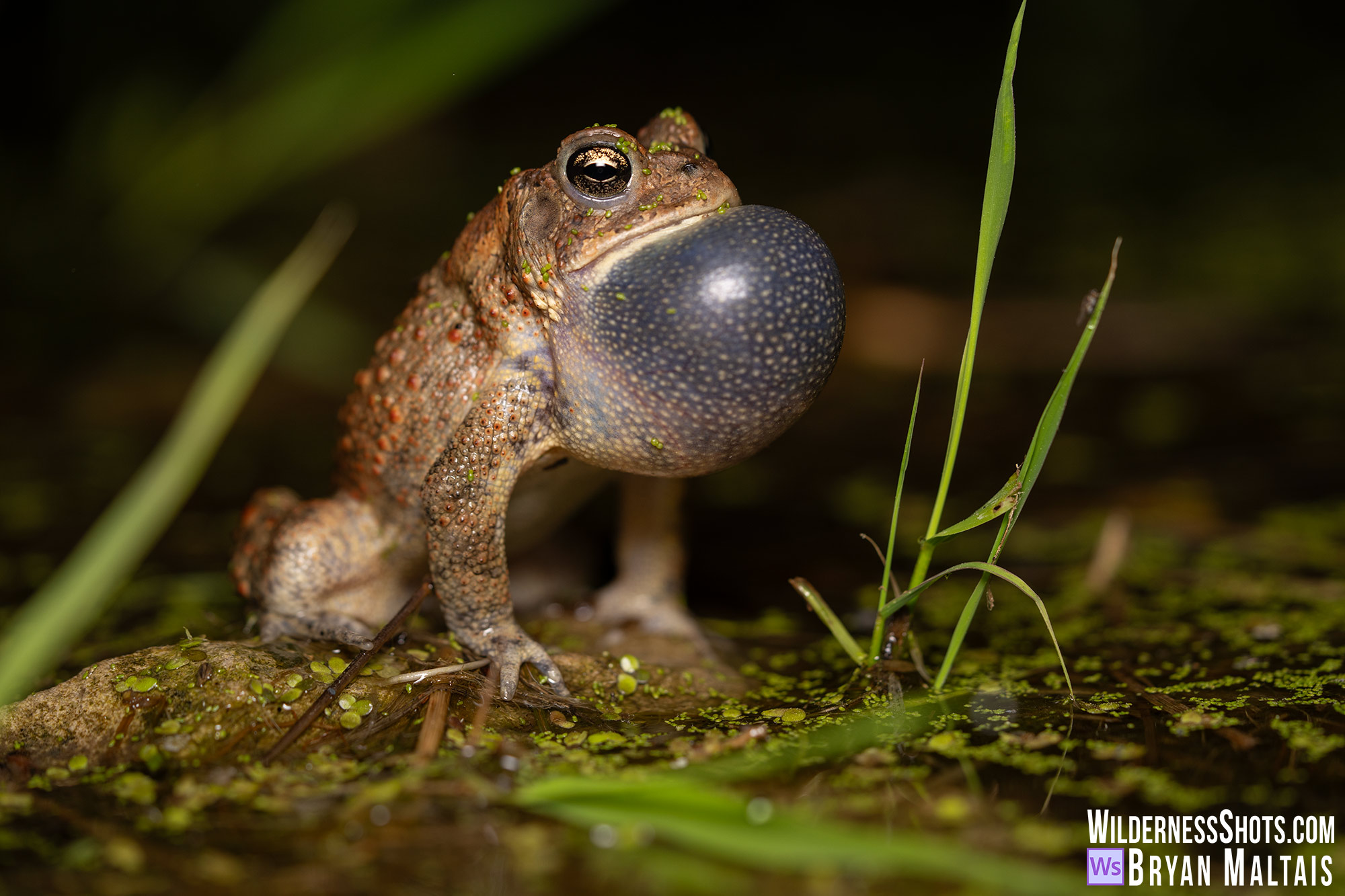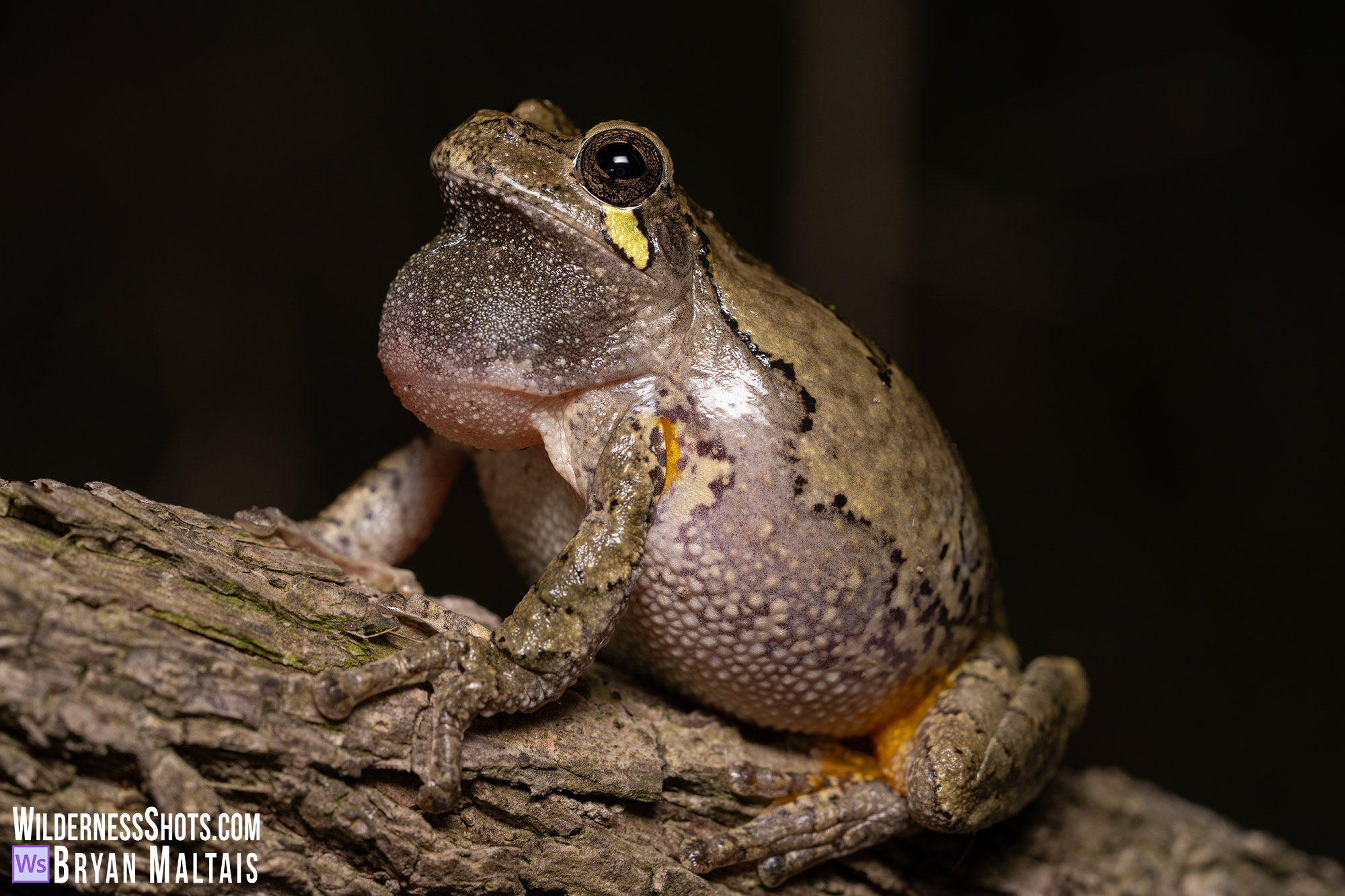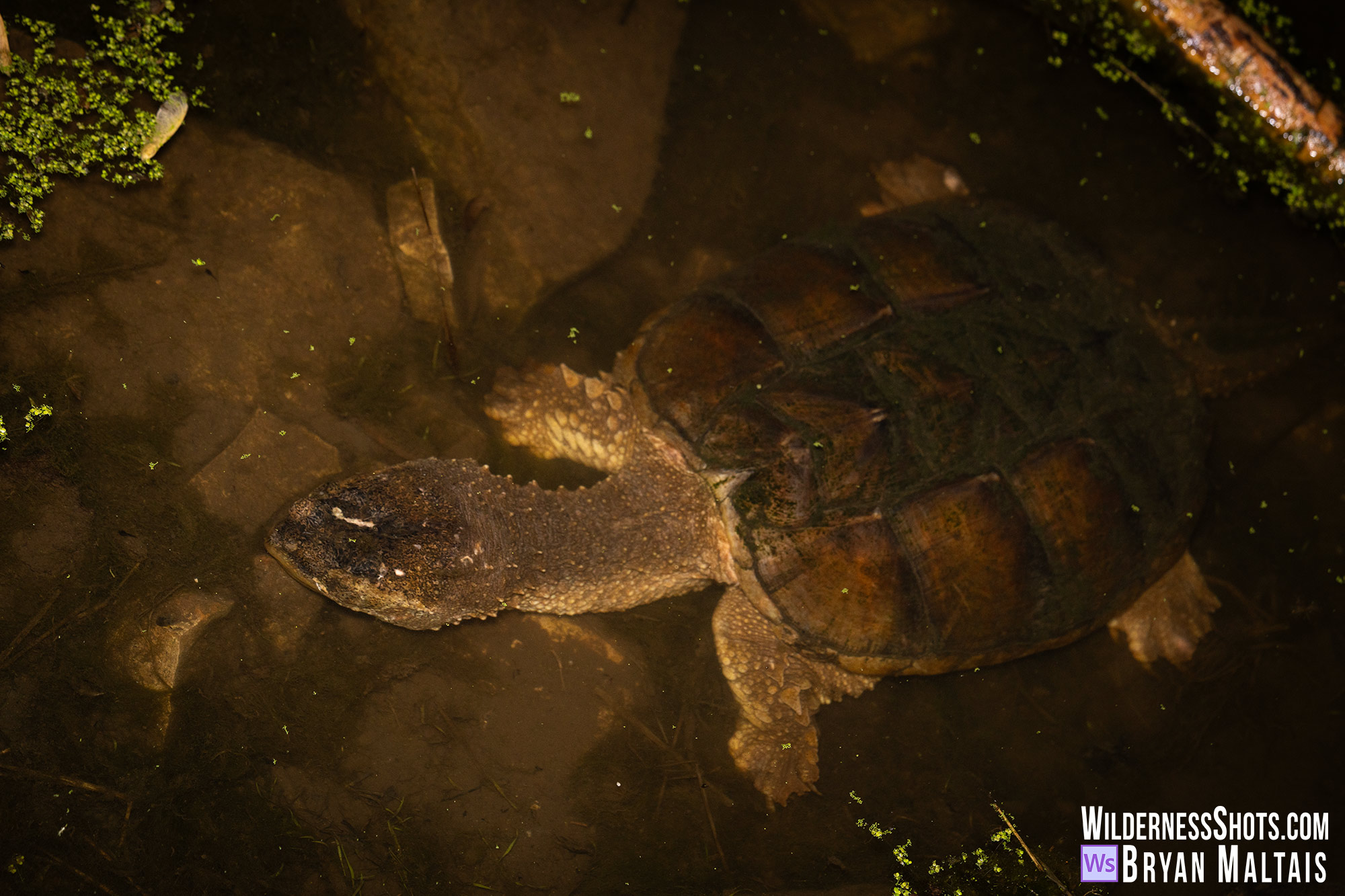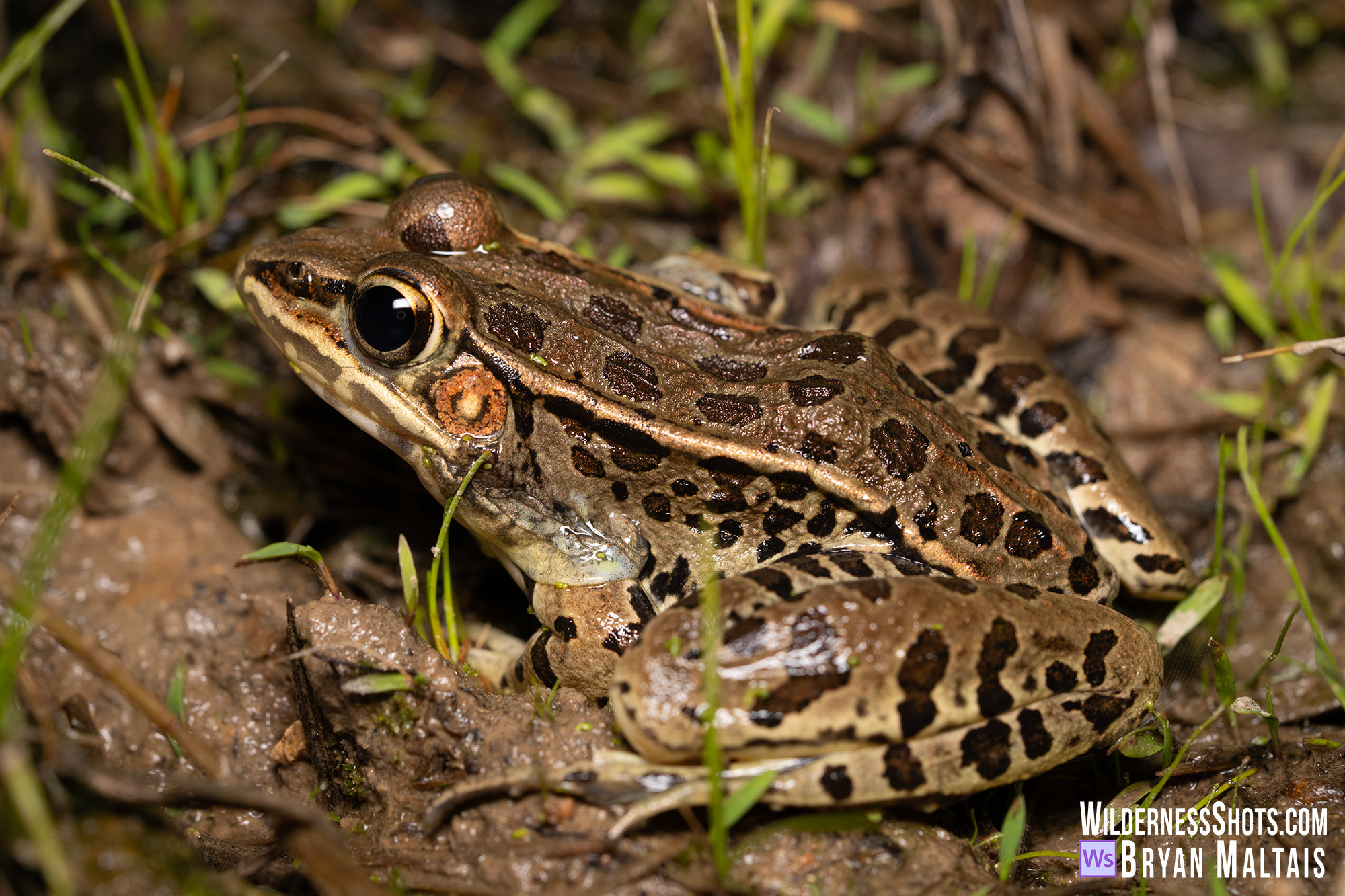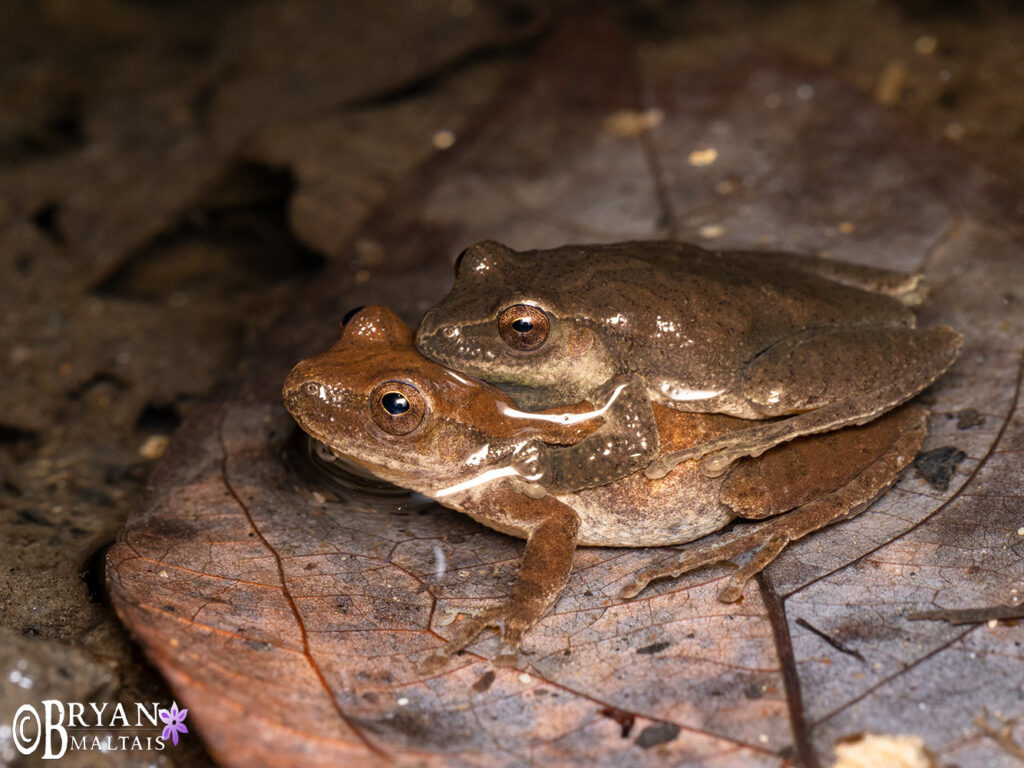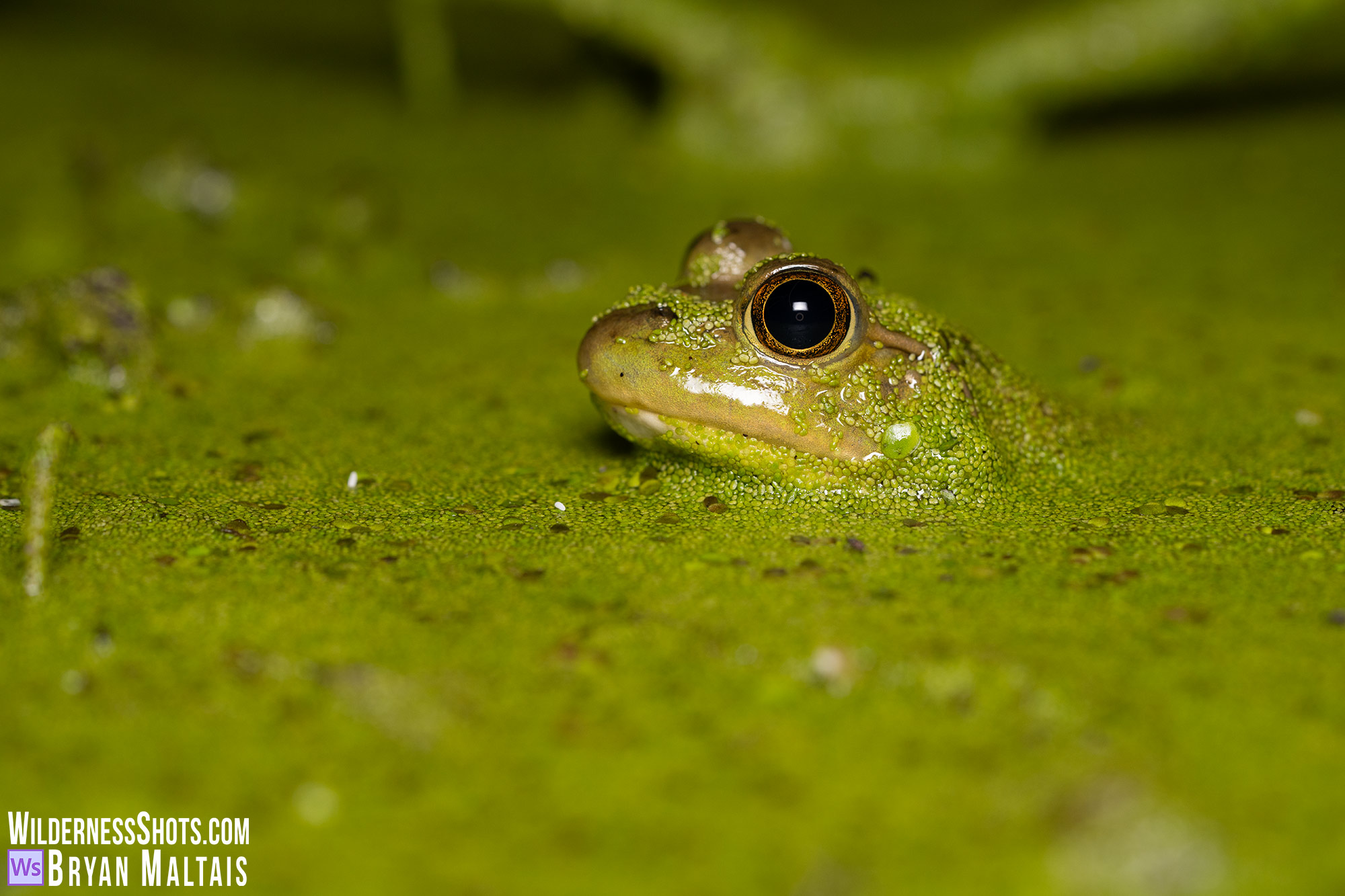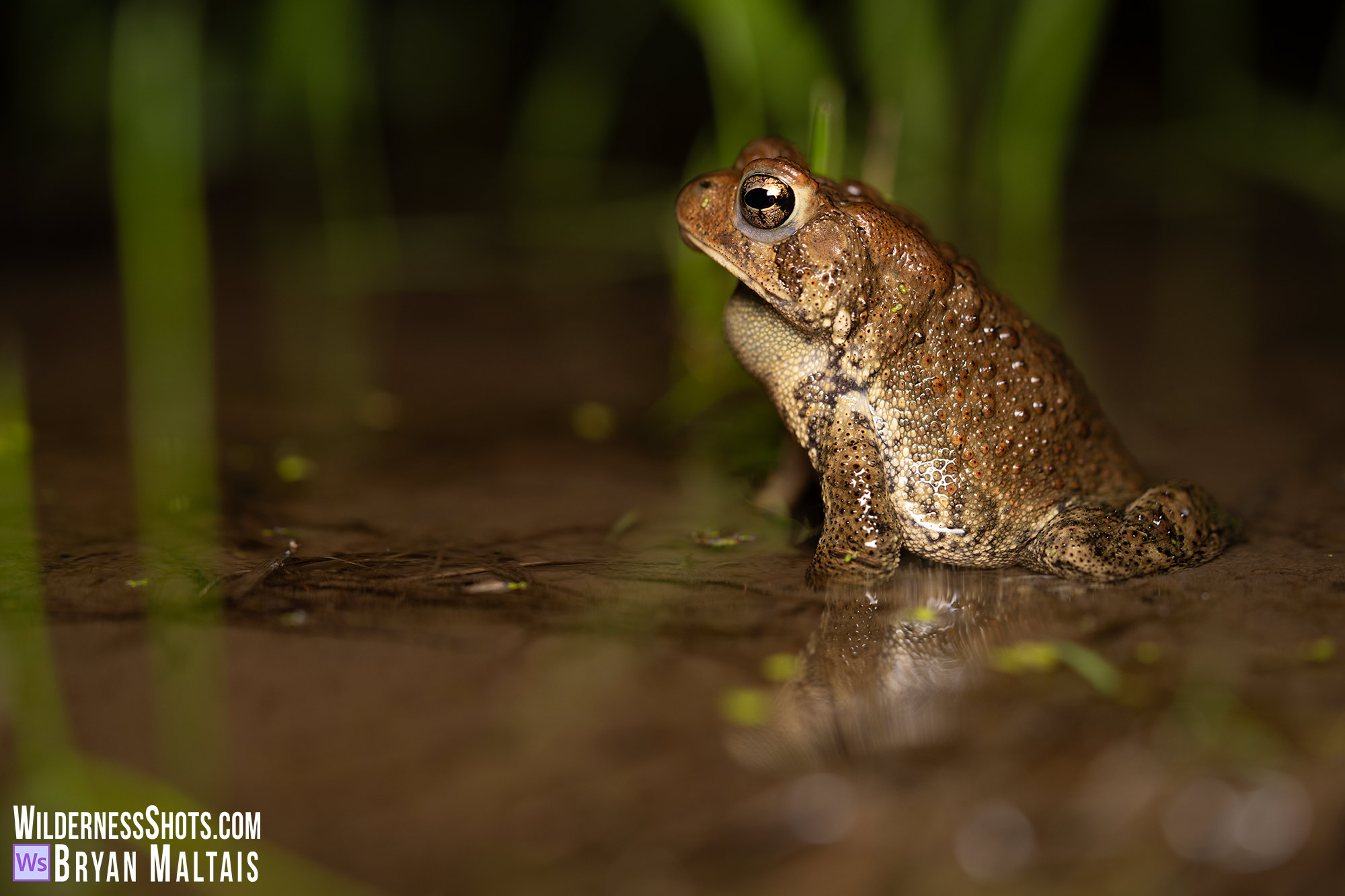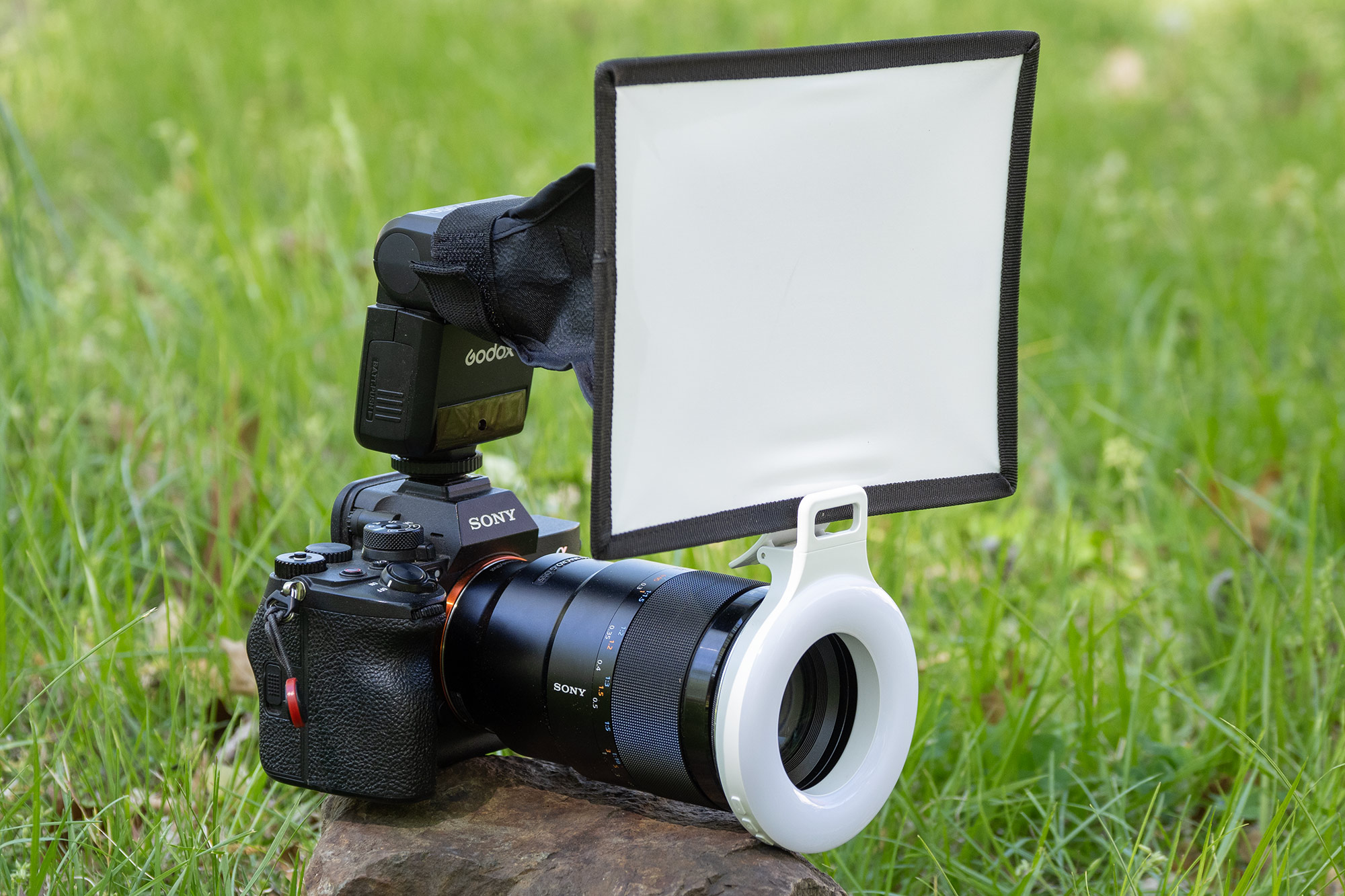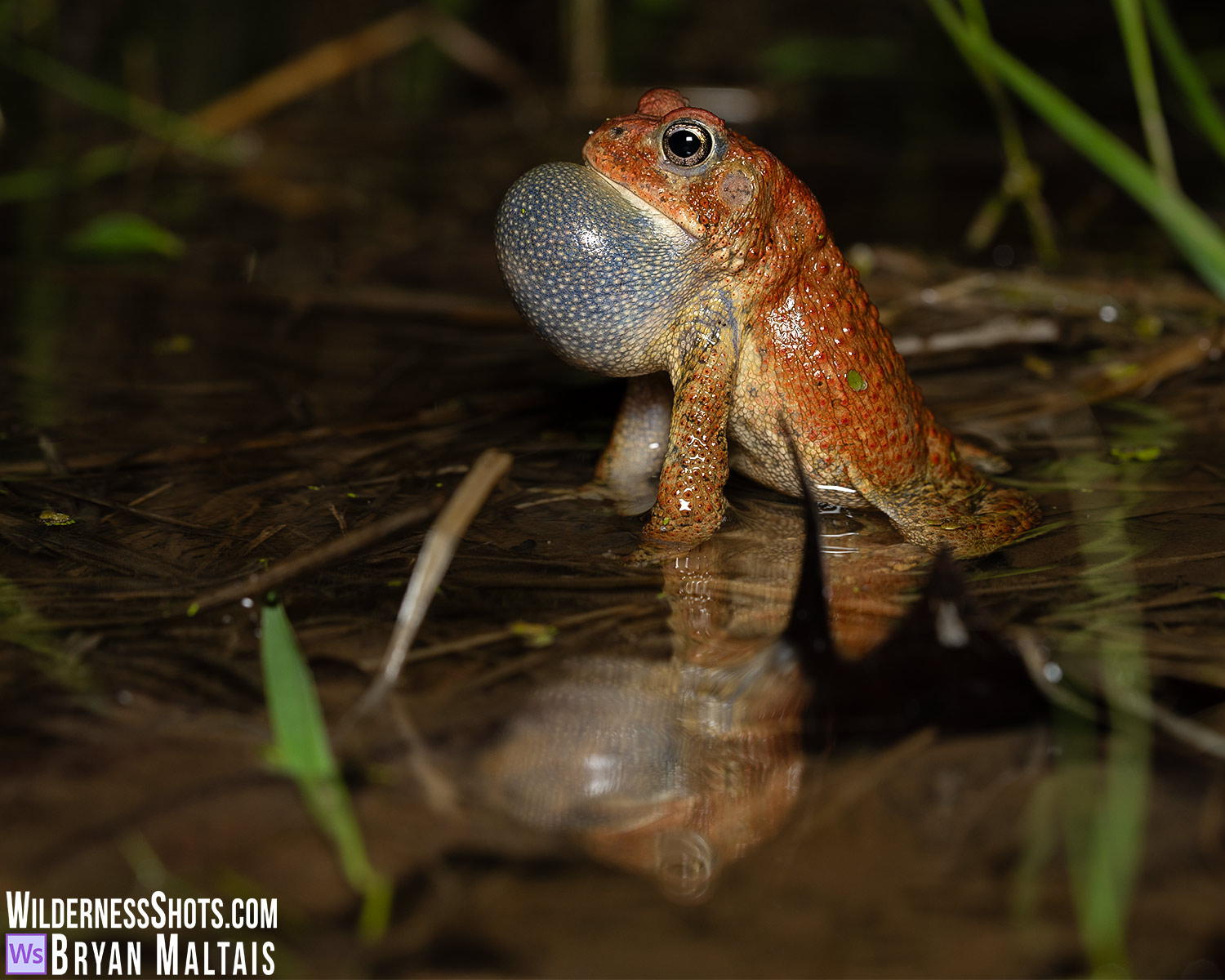
A Night at the Frog Pond-Amphibian Macro Photography
The woodland frog pond is a busy place in spring. Little men from miles around come to sing their hearts out. Seven kinds of frogs and toads were here on this night broadcasting a cacophony of peeps, clicks, cackles, and trills. It’s almost unbelievable how much sound one little frog can project; enough to hurt your ears. This is what ponds in Missouri and throughout the eastern US sound like from April through June. The crowning achievement is to be able to get close enough to photograph one in mid-call with his vocal sack inflated.
Out in the pond, leviathans lurked beneath the surface in search of food. Big male Common Snapping Turtles up to 3 ft. long circled the pond like sea turtles. Their heads alone were as large as a box turtle. The little Muskrats that swam by surely knew to mind their toes.
From the pond’s periphery I was being watched. I could see the reflective eyes of Racoon, Fox and Great Horned Owls in the beam of my headlamp.
When morning comes, most people will never know of all the commotion that happened the night before.
The 7 species present at this pond were Gray Treefrogs, Spring Peepers, Blanchard’s Cricket Frogs, Southern Leopard Frogs, Green Frogs, Bullfrogs and American Toads.
Technicals
I shot these images with my Sony A7rV, Sony 90mm Macro Lens, Godox TT350 Flash, and Neewer Flash Diffuser. You can capture images exactly like these with any model of camera and macro lens. It also only requires any basic flash head. The most defining kit is the flash diffuser, which broadcasts even light. Without it, highlights are too harsh.
I shot in manual mode, 1/250th (the flash sync speed), and various f/stops depending on desired DOF. In most cases, the key to getting shots like these is to be at eye level with the animal, even if it means the camera base is resting on mud or right at water level.
A challenge of night photography is illuminating your subjects to focus on them so I improvised a ring light that goes on the end of the lens. Without one, you have to awkwardly try to shine a light on the subject while operating your camera. There are macro ring lights specifically made for this purpose, but they have two problems. Their diameter is so large that you can’t rest the camera flush with the ground. This prevents getting eye-level shots. Also, their power pack mounts to the camera’s hotshoe, which prevents using a conventional flash and diffuser. I found this compact selfie ring light on Amazon, which I adhered to a 62-82mm step-up ring with J-B Weld epoxy. The ring light even has a spring-loaded clip, meant to attach to a phone, that holds the flash diffuser in place.

